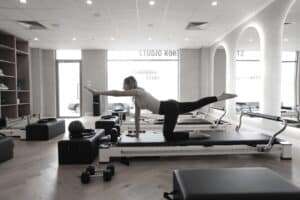Exploring the History of Pilates: From Contrology to Modern Fitness
Pilates. It’s a name you’ve likely heard in the world of fitness—a method celebrated for its focus on core strength, flexibility, and mind-body connection. But where did it all begin? Let’s take a journey through the fascinating history of Pilates, tracing its origins from a personal journey of rehabilitation to a global phenomenon in fitness.
Early Beginnings: Joseph Pilates and Contrology
Our story starts with Joseph Pilates, born in Germany in 1883. A frail child plagued by asthma, rickets, and rheumatic fever, Joseph was determined to overcome his health challenges. His journey led him to explore various physical fitness regimens and eventually to develop his own system of exercises.
During World War I, Joseph, along with other German nationals, was interned in England. It was here that he began refining his method, initially known as “Contrology.” He worked with fellow internees who were ill or injured, using his exercises to help them regain strength and mobility. Little did he know, this was the seed that would grow into a global fitness revolution.
The Move to America and Pilates’ Rise
In 1926, Joseph Pilates emigrated to the United States, where he met Clara, who would become his wife and partner in spreading his method. Together, they established a studio in New York City, attracting dancers and athletes who sought to enhance their performance and recover from injuries. Pilates’ method quickly gained recognition among the dance community for its ability to build core strength, improve flexibility, and foster graceful movement.
From Underground Trend to Mainstream Fitness
As Pilates’ reputation grew, so did its influence beyond the dance world. By the latter half of the 20th century, Pilates had become a staple in fitness studios across the globe. Its emphasis on controlled movements, breath awareness, and alignment struck a chord with people seeking a holistic approach to physical fitness.
Core Principles and Evolution
At the heart of Pilates are its core principles: breathing, concentration, control, centering, precision, and flow. These principles, combined with a variety of exercises performed on mats or specialized equipment like the Reformer, continue to form the foundation of Pilates practice today. While the method has evolved and diversified over time, these principles remain steadfast in guiding practitioners toward improved posture, muscle tone, and overall well-being.
Pilates Today: A Global Phenomenon
Fast forward to the present day, and Pilates has firmly established itself as a global phenomenon. It’s not just a fitness trend but a lifestyle embraced by people of all ages and fitness levels. Whether you’re rehabilitating from an injury, striving for peak athletic performance, or simply seeking a way to stay active and balanced, Pilates offers something for everyone.
Conclusion
The history of Pilates is a testament to the transformative power of one man’s vision to improve health through mindful movement. From its humble beginnings in a World War I internment camp to its status as a cornerstone of modern fitness, Pilates continues to evolve and inspire millions worldwide. So, the next time you step onto a Pilates mat or Reformer, remember that you’re not just exercising—you’re participating in a legacy of wellness that spans over a century.
Embrace the principles, feel the flow, and discover the enduring magic of Pilates in your own fitness journey.
